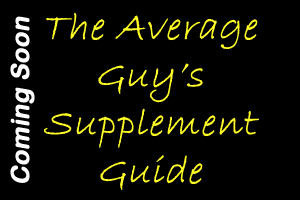As you know, I posted a Chin Up Challenge and promised to give you a plan for improving your chin ups. Before I post the names of those who agreed to partake in the challenge, here are the instructions for the plan.
I personally use the assisted chin up machine (the one that has a weight stack that helps push you up), but you can also get under a Smith Machine bar or a treadmill handle and work on pulling yourself up, adding weight plates as needed. For this program I will concentrate on the assisted chin up machine available at most gyms.
Follow these steps and you will be doing unassisted chin ups in no time at all:
- Estimate the weight you will need to give yourself the assistance that will allow you to do 5 chin ups.
- Test out the estimated weight by doing chin ups. If you exceed 5 chin ups, reduce the weight, take a 90 second rest and then try again.
- Continue with steps 1 and 2 until you can do just 5 chin ups.
- Do 3 sets of 5 chin ups 4 times a week.
- Decrease the assisted weight 2 times a week.
It is important to do the chin ups properly. I take this description from an article by Charles Poliquin, a reknowned strength trainer:
“Your most basic chin-up is the supinated chin-up. This type of chin-up have the greatest range of movements from all chin-ups for both the lats and upper arms. The starting position begins with a bar grasp in a supinated or palms up position. The hands should be held at shoulder width or slightly narrower. The arms should be straightened in a fully extended position with the torso in line with the upper arms. To begin the ascent, the relatively strong upper back and elbow flexor muscles will be used, as the elbows are drawn down and back.
The ascent should continue until the chin clears the bar. It's important to remember that before initiating the ascent, the athlete should inhale. During the ascent, the pulling action and leaning back action must be done simultaneously. Upon descent, exhaling begins and the trunk should come back to an upright position. As the descent is completed, the arms should be fully extended and the shoulder blade should be elevated. (THIS IS EXTREMELY IMPORTANT) To complete the range of motion, the upper arms and scapulae adductors must be stretched on every repetition. The legs should stay in line with the torso as much as possible. There should be no flexion of the hips, as this will lower the quality of the exercise. “
Thus, it is important to utilize your lats when doing chin ups. By following my plan above and using the instructions for the correct execution of the chin up, you will be doing unassisted chin ups in no time at all.
If you do not have access to the assisted chin up machine you have two choices: (1) have a spotter help you; or (2) lying under a Smith Machine bar or a treadmill or something with a bar and pull yourself up. When you can do 50 of these where you are lying under something, you'll be able to do a chin up.

The Challenge:
To be able to complete at least 1 unassisted chin up by March 16, 2008.
The Criteria:
You are currently unable to do at least 1 unassisted chin up.
The Participants:
Suzette [visit her blog here]
Lynda [visit her blog here]
Tearose [visit her blog here]
Lilla [visit her blog here]
Michael [you're on Michael's blog right now]
Entry Deadline:
While we officially started on December 23, 2007, you can join at any time as long as you meet the criteria listed above. Just add a comment to any of the Chin Up Challenge posts stating your interest and I will add you to the participants list immediately.
